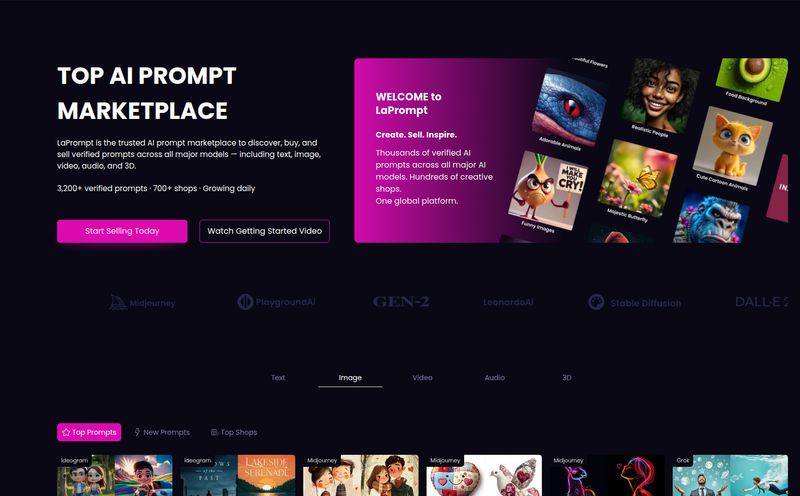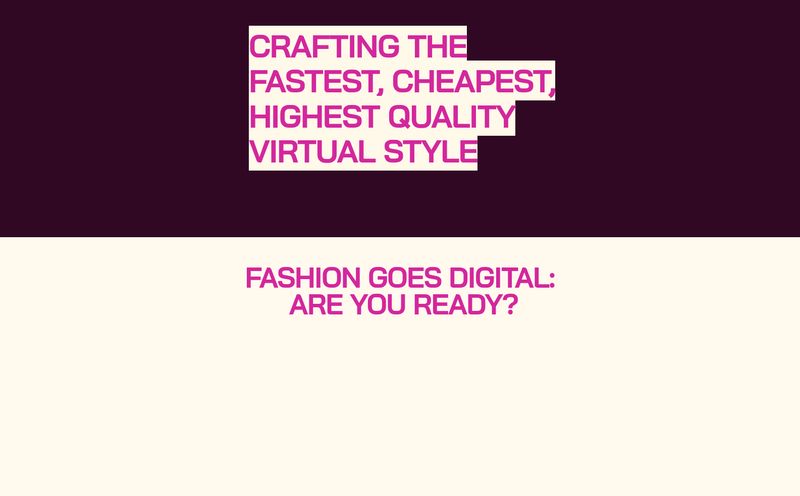Anyone who’s ever stared at the Blender splash screen with a knot in their stomach knows the feeling. The learning curve for 3D modeling isn't just a curve; it's a sheer cliff face. For years, it’s been a specialized skill, a barrier between a great idea and a tangible digital asset. But things are changing. Fast.
We’ve all watched generative AI turn the worlds of copywriting and digital art upside down with tools like Jasper and Midjourney. It was only a matter of time before it came for the third dimension. And that’s where I stumbled upon a tool called Psychoroid. The name sounds like something out of a sci-fi novel, and honestly, what it does feels a little like science fiction too. It promises to turn your words and pictures into fully-fledged 3D models. So, is it magic, or just another overhyped tool? I had to find out.
So, What Exactly Is Psychoroid?
At its heart, Psychoroid is an open-source generative AI 3D engine. That’s a mouthful, I know. Let’s break it down. Think of it like a translator. You give it a simple instruction—either through a text prompt (e.g., “a low-poly treasure chest with a glowing lock”) or by uploading a 2D image—and it translates that idea into a 3D model. No fiddling with vertices, no wrestling with UV maps, at least not at first. The user experence is refreshingly simple. You land on the page, and there's no clutter, no overwhelming dashboard. Just a box and a question: “What can I help you create?” It’s an invitation, not a challenge.

Visit psychoroid.com
Who Is This Tool Built For?
I’ve been in the SEO and digital creation space for a while, and I can immediately see a few groups of people whose ears should be perking up right now. This isn't just a toy for tech enthusiasts.
- Indie Game Developers: Need to populate your world with props but don't have a dedicated 3D artist on your shoestring budget? This could be a game-changer for rapid prototyping and asset creation.
- 3D Printing Hobbyists: Got an idea for a custom D&D miniature or a unique phone stand? Describing it might be easier than modeling it from scratch.
- E-commerce & Marketing Folks: Imagine generating product mockups or unique 3D elements for your website on the fly. This could seriously speed up visual content creation.
- Concept Artists & Designers: Sometimes you just need to get a 3D sketch of an idea out of your head and onto the screen. This is a fantastic tool for quick ideation before diving into a more detailed workflow.
Let's Talk Features (The Good Stuff)
Psychoroid isn't just a one-trick pony. It has a few compelling aspects that make it stand out from the crowd of emerging AI tools.
From Prompt to Polygon
The core of the platform is its ability to generate models from both text and images. I've always felt the next frontier for AI was interpreting visual and text data to create something entirely new, and this is a perfect example. The image-to-3D feature is particularly intriguing. Got a sketch on a napkin or a piece of concept art? In theory, you can drop it in and get a 3D base to work from. It's a bridge from 2D imagination to 3D reality.
Open Source for the Win
This is a big deal. For the non-developers out there, “open source” means the underlying code of the engine is public. Why does that matter to you? It fosters a community. It means other smart people can contribute, fix bugs, and even build custom versions. It suggests a philosophy of transparency and collaboration, which I personally find much more appealing than a locked-down, proprietary system. It also means the tool has the potential to integrate with other platforms in really cool ways down the line, thanks to API access on higher tiers.
Optimized for Your Specific Workflow
The platform isn't just spitting out random, heavy 3D files. It mentions optimizing models specifically for games, 3D printing, and e-commerce. This is huge. A model for a video game needs to be low-poly and efficient, while a model for 3D printing needs to be watertight and structurally sound. The fact that Psychoroid is thinking about the end-use case shows a deeper understanding of the creative process.
A Quick Reality Check: The Potential Downsides
Alright, it can't all be sunshine and perfectly rendered polygons. As with any AI tool, especially in these early stages, there are some trade-offs.
The AI's Creative Leash
Some might argue that relying on AI can limit fine-tuned creative control. If you have a very specific vision, you might find yourself fighting the AI's interpretation. It's best to think of Psychoroid as a creative co-pilot, not an autopilot. It gets you 80% of the way there, but that last 20% of tweaking and perfecting will likely still require some hands-on 3D know-how in a program like Blender or ZBrush.
Quality Can Be a Mixed Bag
Generative AI is notorious for… well, getting things a bit weird sometimes. Just like AI art generators can give people six fingers, AI 3D generators can produce artifacts or strange geometry. The quality of your output will heavily depend on the clarity of your input prompt and the current state of the AI's training. Don't expect a flawless, AAA-game-ready asset every single time. But for a first pass? It’s often more than good enough.
Psychoroid Pricing: What’s the Damage?
So how much does this futuristic 3D factory cost? The pricing structure is actually pretty reasonable and scales well for different types of users. They run on a credit system, where one generation task costs a certain number of credits.
| Plan | Price | Key Features |
|---|---|---|
| Free (Explore) | Free | 30 credits/month, limited queue priority, assets are public. Perfect for testing the waters. |
| Automate | $15 / month | 300 credits/month, standard priority, private & customer-owned assets. Great for hobbyists and small projects. |
| Scale | $45 / month | 1200 credits/month, top priority, AI texture editing, animation, API access. This is the tier for pros and businesses. |
For the most current details, you should always check their official pricing page.
FAQs about Psychoroid
- Is Psychoroid good for complete beginners?
- Yes and no. It's fantastic for generating initial ideas without any modeling skills. However, to truly customize and perfect your models, having a basic understanding of 3D concepts will be a huge help.
- What does "open-source" really mean for me?
- It means the core technology is transparent and community-driven. In the long run, this could lead to more features, better stability, and cool integrations developed by the user community itself. It's a sign of a healthy, growing platform.
- Can I use the assets I create for commercial projects?
- This depends on your plan. Assets created on the Free plan are public. If you want to own your assets and use them privately or commercially, you'll need one of the paid plans like Automate or Scale.
- How does the credit system work?
- Think of credits as tokens for using the AI. Each time you ask it to generate a 3D model, it consumes some credits. The more complex the task, the more credits it might use. The paid plans give you a much larger monthly allowance.
- Can Psychoroid animate the models it creates?
- Yes! According to their pricing, the 'Scale' plan includes the ability to animate your creations, which is a seriously powerful feature for game developers and digital marketers.
- How is this different from an AI image generator like Midjourney?
- The key difference is the output. Midjourney creates a flat, 2D image. Psychoroid creates a 3D model—an object with depth, height, and width that you can rotate, inspect from all angles, and use in 3D environments like games or virtual reality.
My Final Thoughts on Psychoroid
So, what's the verdict? I'm genuinely excited by Psychoroid. It represents a major step toward democratizing 3D creation. It’s not going to put professional 3D artists out of a job—not by a long shot. The nuanced, intentional work of a skilled artist will always be in a league of its own.
But that's not the point. The point is that it lowers the barrier to entry. It turns a frustrating, technical roadblock into a creative conversation. For indie creators, marketers, and hobbyists who have been locked out of the 3D world, this tool is a key. Is it perfect? No. But it’s a powerful, promising glimpse into the future of digital creation, and for me, that's more than enough to be optimistic about. It’s definitely a platform I’ll be keeping a close eye on.



